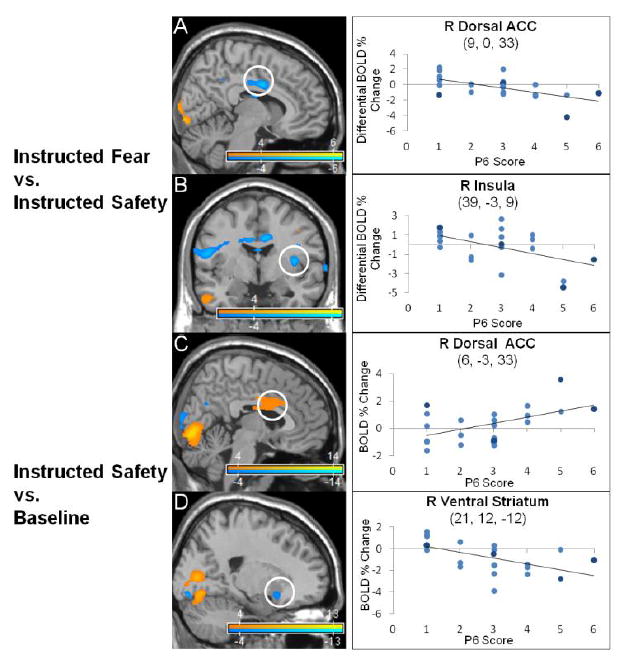Fig. 2.

Salience network activations correlated to persecutory delusion severity in the instructed-fear/safety paradigm. Statistical parametric maps show blood-oxygen-level-dependent (BOLD) neural activation changes thresholded at a voxelwise p-value of 0.001 for visualization purposes. (A-B) In the instructed-fear vs. safety contrast, decreased activations in the right posterior-dorsal anterior cingulate cortex (ACC) (9, 0, 33: peak z-score = 4.923, corrected p-value < 0.001) and insula (39, -3, 9: peak z-score = 4.668, corrected p-value = 0.001) correlated with P6 scores (persecutory delusion severity). (C-D) In the instructed-safety vs. baseline contrast, P6 scores correlated positively with increased activations in the right posterior-dorsal ACC (6, -3, 33: peak z-score = 4.052, corrected p-value = 0.014) and insula (39, 24, 6: peak z-score = 3.996, corrected p-value = 0.017; not shown), and correlated negatively with decreased right ventral striatum (21, 12, -12: peak z-score = 4.325, corrected p-value = 0.005) activations. In the scatter plots, light blue indicates schizophrenia subjects, dark blue schizoaffective subjects.
